





|
|


|
|
||
 |
|
|
InfoBelow find details on the terrestrial usecase hardware, some pictures from a dry run setup, screenshots of an example Kepler workflow using the DataTurbine actor hardware, some pictures from a dry run setup, screenshots of an example Kepler workflow using the DataTurbine actor and the resulting plots. The CRBasic program used to collect these data is also posted below. and the resulting plots. The CRBasic program used to collect these data is also posted below.
The datafile that comes out of Loggernet, an ascii comma separated .dat file (LoggerNet "TOA5" format) was parsed and pushed into my DataTurbine server with a small java program I wrote (DatToRBNB.java). This program can create a new DataTurbine channelmap using all the data in a TOA5 file or be periodically run on a growing file to append to an existing channelmap. (* currently have a bug w/ append mode periodically dropping old data). DatToRBNB can also be used to pull data from DataTurbine and print it to stdout (in fact pulling data is also done when pushing using append mode, to gather knowledge about the state of the existing DataTurbine data before appending). Note: Don't try to read too much into these plots--data were collected indoors, from hardware that was occasionally moved about, powered off, etc. DatToRBNB.java and the DataTurbine actor were both being modified as well.
HardwareFor sensors see further down the page.
Pictures
Not shown: mounted yagi and lightening rod (goes vertical at the very top). Mount for Yagi is above anemometer cross-arm mount--we may want to reverse this if possible to interfere less with the anemometer.
WorkflowA bit messy...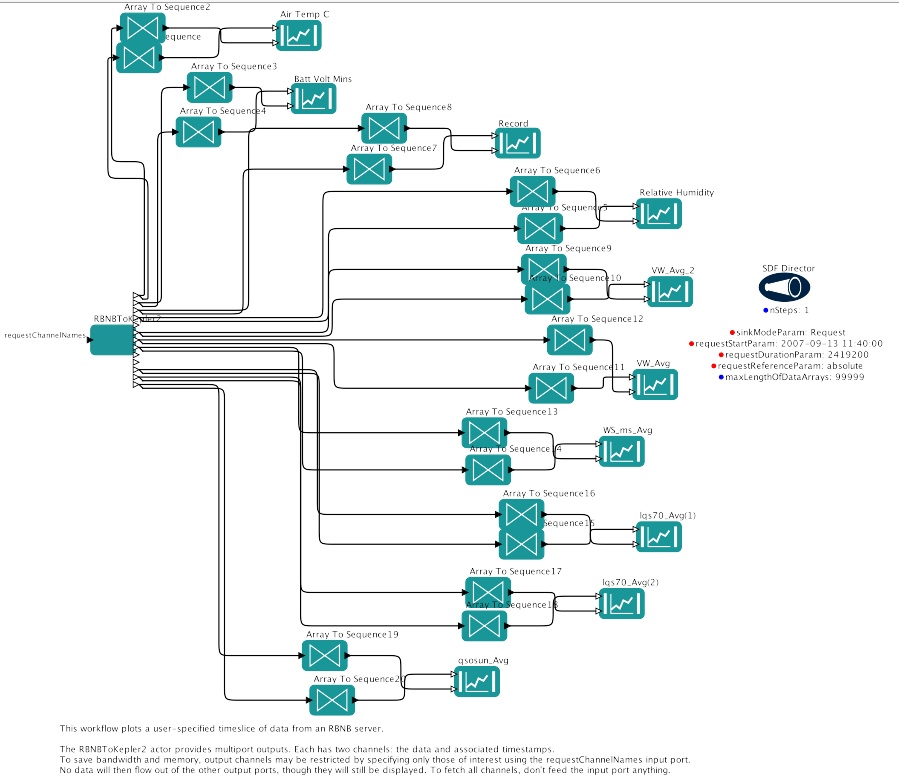
Sensor Hardware with Example PlotsAll times are in seconds since unix epoch. This will be remedied in the future, it requires a fair amount of development to be implemented properly. You can easily see when I switched from AC to solar near the beginning of the battery voltage plot. Sensors and the solar panel were occasionally arbitrarily moved about. We had one cloudy day.
Air Temp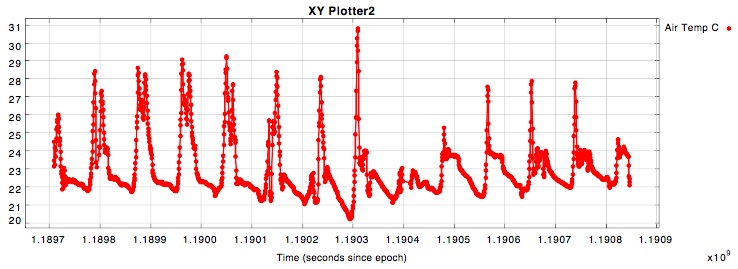
Relative Humidity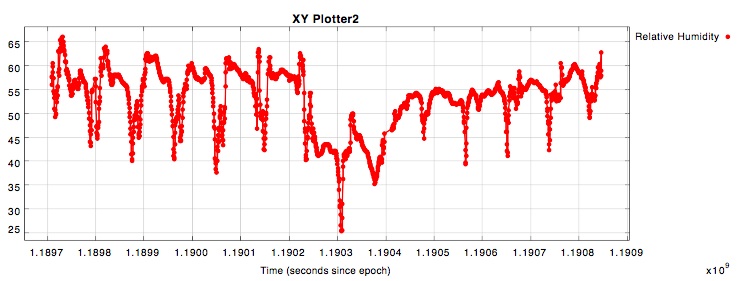
Battery Voltage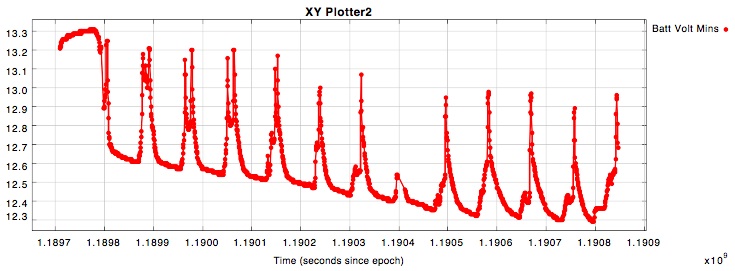
Line Photosynthetic Photon Flux (PPF) 1.jpg)
Line PPF 2.jpg)
Point PPF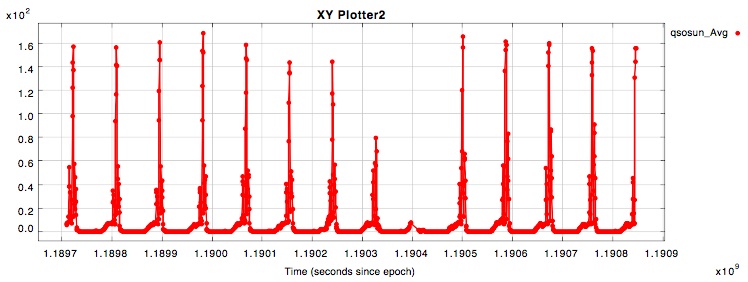
Records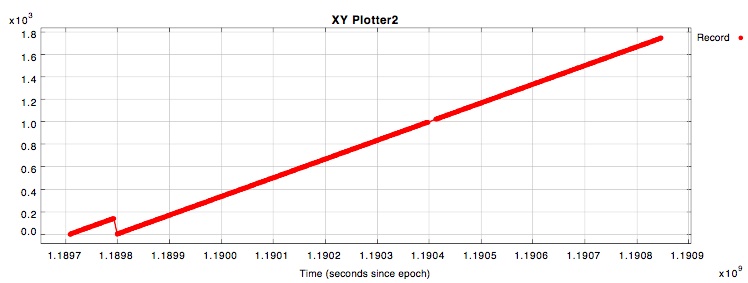
Wind Speed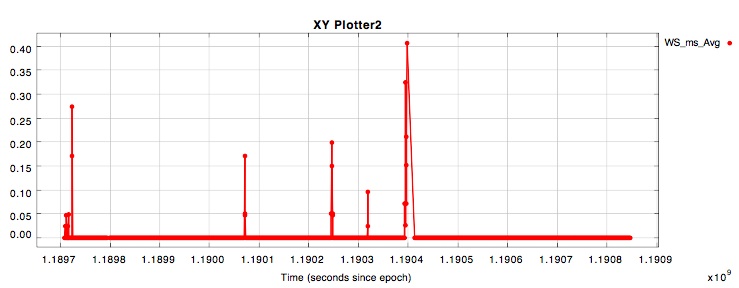
Volumetric Water Content (VWC) 1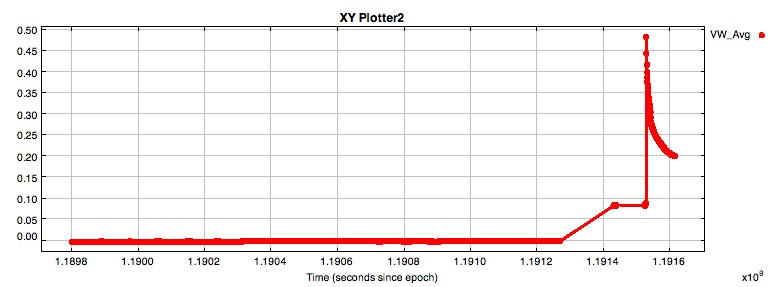
VWC 2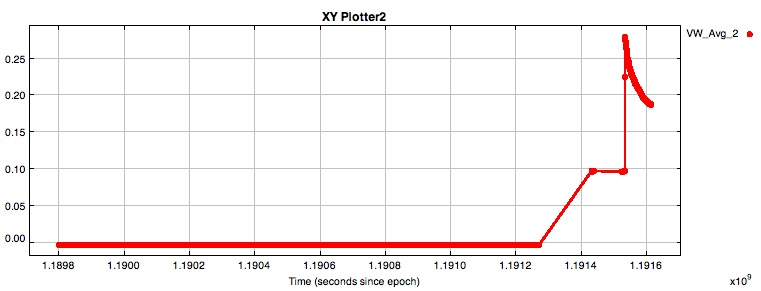
Rain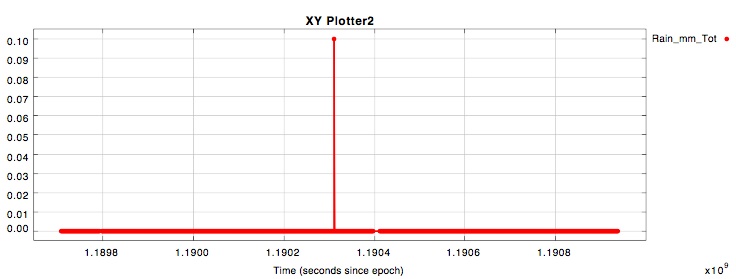
Datalogger programThis is the CRBasic program running on the CR800 doing the sampling.allSensors.CR8:
'CR800
'Created by Short Cut (2.5)
'
'Modified to fit my wiring. Also made other changes. Derik Barseghian 09.12.07
'ie WARNING: don't trust the wiring diagrams Shortcut shows when you open this prog
'Declare Variables and Units
Public Batt_Volt
Public VW
Public PA_uS
Public VW_2
Public PA_uS_2
Public lqs70(2)
Public qsosun
Public WS_ms
Public TRHData(2)
Public Rain_mm
Alias TRHData(1)=AirTC
Alias TRHData(2)=RH
Units Batt_Volt=Volts
Units PA_uS=uSec
Units PA_uS_2=uSec
Units lqs70=mV
Units qsosun=mV
Units WS_ms=meters/second
Units Rain_mm=mm
Units AirTC=Deg C
Units RH=%
'Define Data Tables
DataTable(Table1,True,-1)
DataInterval(0,10,Min,10)
Minimum(1,Batt_Volt,FP2,False,False)
Average(1,VW,FP2,False)
Average(1,VW_2,FP2,False)
Average(1,lqs70(1),FP2,False)
Average(1,lqs70(2),FP2,False)
Average(1,qsosun,FP2,False)
Average(1,WS_ms,FP2,False)
Maximum(1,WS_ms,FP2,False,False)
Minimum(1,WS_ms,FP2,False,False)
Average(1,AirTC,FP2,False)
Sample(1,RH,FP2)
Totalize(1,Rain_mm,FP2,False)
EndTable
'Main Program
BeginProg
Scan(30,Sec,1,0)
'Default Datalogger Battery Voltage measurement Batt_Volt:
Battery(Batt_Volt)
'CS616 Water Content Reflectometer measurements VW and PA_uS:
CS616(PA_uS,1,5,1,1,1,0)
VW=-0.0663+(-0.0063*PA_uS)+(0.0007*PA_uS^2)
'CS616 Water Content Reflectometer measurements VW_2 and PA_uS_2:
CS616(PA_uS_2,1,6,2,1,1,0)
VW_2=-0.0663+(-0.0063*PA_uS_2)+(0.0007*PA_uS_2^2)
'Generic Single-Ended Voltage measurements lqs70(1):
VoltSe(lqs70(1),2,mV2500,1,True,0,_60Hz,1.0,0.0)
'Generic Single-Ended Voltage measurements qsosun:
VoltSE(qsosun,1,mV2500,2,True,0,_60Hz,1.0,0.0)
'014A Wind Speed Sensor measurement WS_ms:
PulseCount(WS_ms,1,1,2,1,0.8,0.447)
If WS_ms<0.457 Then WS_ms=0
'CS215 Temperature & Relative Humidity Sensor (CSL) measurements AirTC and RH:
SDI12Recorder(AirTC,3,"0","M!",1,0)
'TE525MM/TE525M Rain Gauge measurement Rain_mm:
PulseCount(Rain_mm,1,2,2,0,0.1,0)
'Call Data Tables and Store Data
CallTable(Table1)
NextScan
EndProg
Wiring detailsThis is how I've currently got things wired.
Computer (ugly notes-dump that i'll clean up later...:)Details on the computer1 that will be deployed at Internet Point of Presence:Dell Optiplex gx270 p4 2.8ghz winXP Pro sp2 1gb 75gb ntfs (65gb free) Bios: Boot Sequence: 1. Floppy device (not installed) 2. IDE CD-ROM Device 3. Hard-Disk Drive C: 4. Integrated NIC PowerOn: On. Everyday at 00:00 Remote wake is On. AC Power Recovery: On Windows Auto logon has been enabled via tweakui LoggerNet is in Startup folder Windows Automatic Updates turned off. WIndows firewall is on. dyndns updater running as a service (ask me for address) tightvnc server running with "Allow only loopback connections" set. ie you must ssh tunnel. starts automatically on login dyndns address must be used at least once monthly for it to not expire sshd installed using cygwin, following these instructions: http://pigtail.net/LRP/printsrv/cygwin-sshd.html
computer2:
dyndns updater running as a service (ask me for address)
UPS:Both systems will be connected to identical UPS, 1 UPS per computer.UPS details: APC BE350R "Battery Backup ES Series", 350VA 120V USB 200Watts. 8 outlets, 4 provide battery backup. APC Powerchute Personal Edition v2.0 installed on each pc. Defaults settings kept, except: "Enable battery backup at all times" has been chosen. Runtime is by default "Keep my computer on as long as possible". This should give ~7 minutes of pc runtime if pc is the only draw (the other UPS claims 36 minutes when connected to either PC...seems bogus.)
Todo:
Deployment at Baskett Slough (Dec. 2007):(On slanted ground, it is level despite appearances. Loose cables have since been secured to legs and ground.)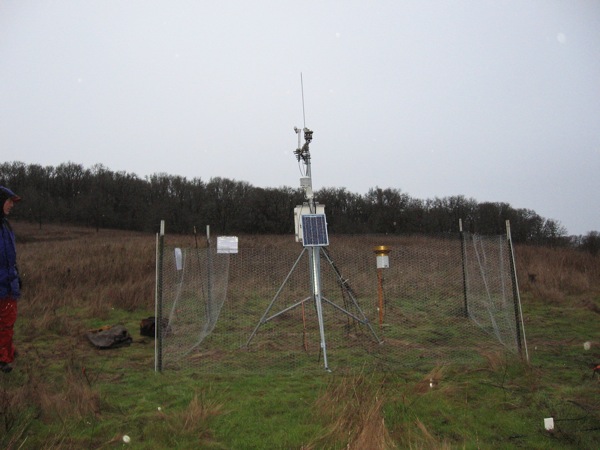

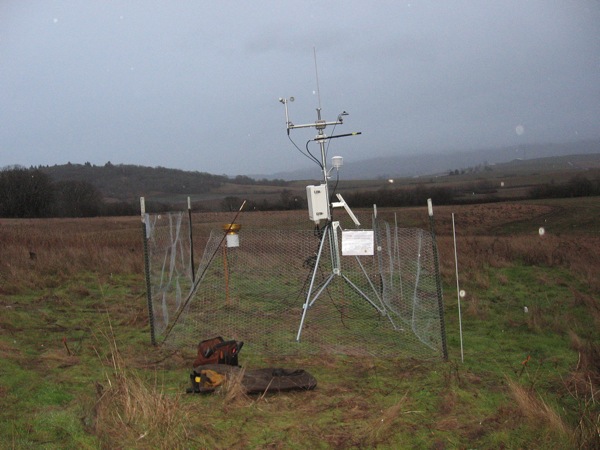
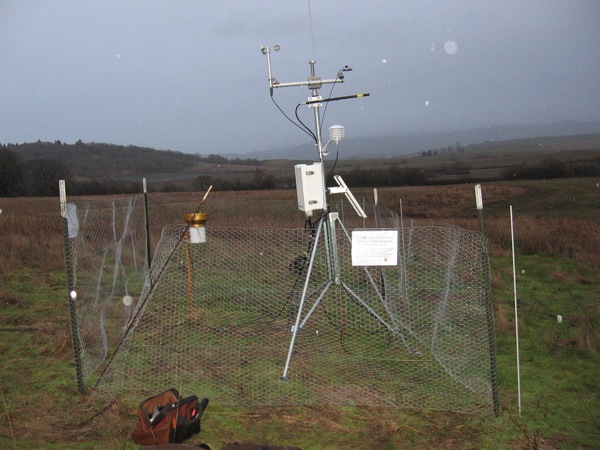
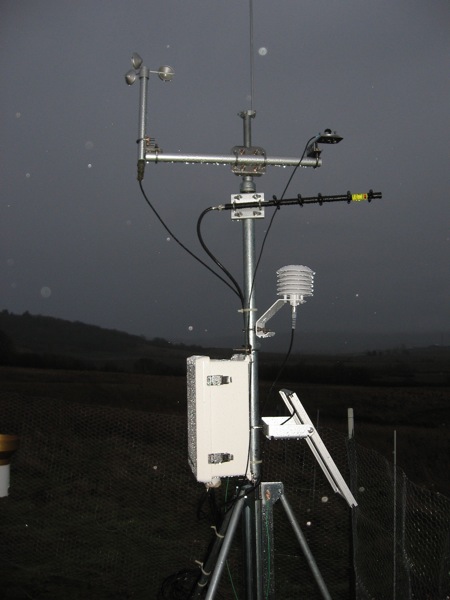
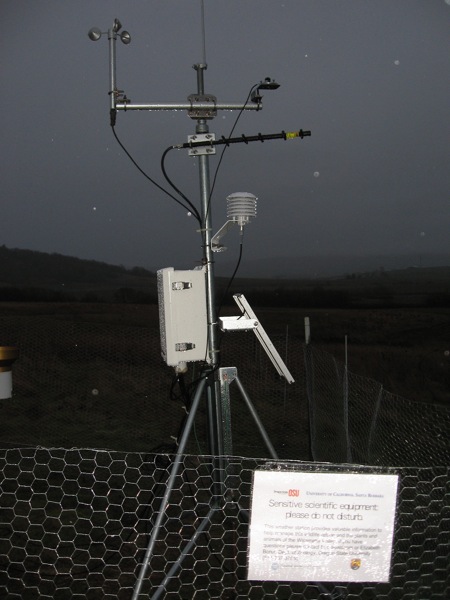
Attachments:
|
| This material is based upon work supported by the National Science Foundation under award 0619060. Any opinions, findings and conclusions or recomendations expressed in this material are those of the author(s) and do not necessarily reflect the views of the National Science Foundation (NSF). Copyright 2007 |